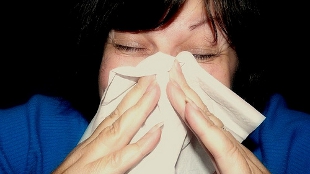 FLICKR, MCFARLANDMOThe flu and cold seasons always occur in the winter months for a reason, according to research presented at this year’s American Society of Microbiology conference in Denver, Colorado. Scientists at Yale University found that chilled mice produced fewer antiviral immune signals to help battle mouse-specific rhinovirus than did warm mice, according to Nature.
FLICKR, MCFARLANDMOThe flu and cold seasons always occur in the winter months for a reason, according to research presented at this year’s American Society of Microbiology conference in Denver, Colorado. Scientists at Yale University found that chilled mice produced fewer antiviral immune signals to help battle mouse-specific rhinovirus than did warm mice, according to Nature.
The researchers followed up on the work in mice by culturing human lung cells in cold and warm conditions. They found that cells infected in colder temperatures were less likely to initiate programmed cell death, a response that slows the spread of infection to neighboring cells, than cells cultured in warmer conditions.
But some researchers caution that temperature is unlikely to be the only factor explaining higher infection rates in the winter. “Simple answers like this are never the whole story,” Vincent Racaniello of Columbia University in New York City told Nature. ...
Interested in reading more?




